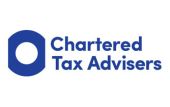
Company purchase of own shares
Key points
- The shares that are bought back must be paid for in full at the time of the buyback (CA 2006, s 691(2)).
- In general, the amount a shareholder receives over the sum paid for originally subscribed shares is a distribution chargeable to income tax.
- If the onerous conditions in CTA 2010, s 1033 et seq are satisfied, however, the full amount can be treated as subject to capital gains tax.
- Multiple completions allow the seller to comply with company law, but technical conditions must be satisfied from a tax perspective.
One of the mechanisms by which a company can eliminate a shareholder is through a company purchase of own shares. The legal basis for a company buying back its shares is in Companies Act 2006 (CA 2006), s 690 et seq. This article is not a treatise on the relevant company law, but it is important that company law requires that ‘the shares must be paid for on purchase’ (CA 2006, s 691(2)). For both company law and tax purposes, this is taken to mean that the shares that are bought back by a company must be paid for in full at the time of the buyback, so there is no scope for the use of deferred consideration, loan notes, etc. in such transactions.
Generally speaking, an exiting shareholder is likely to want his or her shares bought back at a pro-rated market value relative to the overall value of the company. As a matter of tax law, however, any amounts paid over the sums originally subscribed for those shares will be a distribution, except for any relieving legislation, and be chargeable to income tax at dividend tax rates.
Example 1 Georges subscribed £60 for 60 £1 shares in HanoverL td.T he total issued share capital of the company is £100. At the point at which it is agreed to buy back George's shares the company is worth £1m so it is agreedt hat George'ss haresw ill be bought back for £600 000. Prima fade George1s consideration will include £60 that will be treated as the return of the original capital subscribed for the shares and £599 940 that will be treated as a distribution for incomet ax purposesT. hus he will have a nil capital gain and a large distribution.
However, if the conditions of CTA 2010, s 1033 et seq are satisfied the full amount can be treated as a capital payment, subject to capital gains tax. The conditions are fairly onerous and a recent pronouncement from HMRC means that, in some cases, they will be more onerous for future transactions.
Example2 As in Example1 , but Hanover Ltd is a trading company and all the conditions for capital treatment (see below) are met. George's £600,000 consideration will therefore all be treated as a capital return for capital gains tax purposes. Thus he will have a capital gain of £599 940 chargeable at 20% or 10% if George qualifies for business asset disposal relief.
Conditions for capital treatment
Very broadly, the conditions are:
- The company must be an unquoted trading company or holding company of a trading group (CTA 2010, s 1033(1)(a)).
- The buyback must have a purpose of benefiting the trade and must not be to participate in the profits of the company without taking dividends or otherwise to avoid tax (s 1033(2)).
- As an alternative to the last condition, the buyback can be in order to help the shareholder meet inheritance tax liabilities in cases where they would otherwise find it difficult to raise the funds (s 1033(3)).
- The vendors must be UK resident (s 1034).
- The shares must have been held for at least five years (s 1035).
- The vendor’s interests, including the interests of his or her associates, must reduce by 25% proportionately, being measured both by reference to holdings of share capital and to entitlements to profits (s 1037 and s 1038). HMRC’s views about the circumstances where retention of an interest in the company is considered acceptable is covered in statement of practice 2 (1982) (SP2), although this is a non-statutory view and open to challenge.
- The vendors must not be connected with the company or any member of the same group after the share buyback. This is the area that, as a result of the recent HMRC pronouncement, is causing some difficulty at the moment (s 1042).
Multiple completion buy-backs
SP2 indicates that in order to meet the trade benefit test it is expected that the entire share capital owned by the vendor will be sold. It is, however, considered acceptable where the company does not have the resources to buy out the vendor completely to demonstrate the intention to buy out an initial tranche, subject to the 25% reduction test, with the intention of buying out the remainder when possible.
HMRC also considers it acceptable to leave a retiring shareholder with a small shareholding not exceeding 5% of the issued share capital.
Unfortunately, where the company does not have enough money to buy back the relevant shareholding in one go, as already noted, company law does not allow us to carry out these transactions with any element of deferred consideration. So, the normal approach to these transactions is to have a sale and purchase agreement with a single exchange but multiple completions. In effect, rather than buying a person out in one go, there may be several transactions over a period of months or years, on the basis that the company’s cash flow should allow several smaller transactions to be completed in accordance with company law.
While multiple completions might allow us to comply with company law, there can be some difficulties in respect of the technical conditions to be satisfied from a tax perspective. In particular, we need to have regard to the requirements for the 25% reduction in proportionate shareholdings and the connection test. The way this is usually dealt with is for the exiting shareholder to agree to give up all rights associated with the remaining shareholdings, ie right to dividends, rights to assets on a winding up and rights to vote.
For the purposes of the requirement for a proportionate reduction in shareholding, it is accepted that giving up all beneficial rights to the shares will satisfy the condition. We are comfortable that this is the case because we are told by s 1048(3) that references to ownership of shares refers only to beneficial ownership.
Unfortunately, HMRC does not accept that the connection test is satisfied by the elimination of beneficial rights over the shares.
However, the ICAEW issued a technical release in April 1989 (TR745) following discussions with HMRC on the purchase of own shares legislation. We assume that the release was issued with the full knowledge and agreement of the contents with the Inland Revenue. The purchase by instalments is one of the matters covered in the release, which states: ‘They [The Inland Revenue] take the view that as the beneficial ownership of the shares is regarded as passed at the date of the contract, a disposal for capital gains purposes by the vendor will have taken place at that time notwithstanding payments at later dates.’ The clear implication is that the Inland Revenue was comfortable with multiple completions in principle. Sadly, though, the release does not directly address the connection test in this context.
The connection test
The test of connection (s 1062) states that a person is connected with the company if that person directly or indirectly possesses, or is entitled to acquire, more than 30% of:
- the issued ordinary share capital of the company;
- the aggregate of the loan capital and issued share capital (whether or not ordinary share capital) of the company; or
- the voting power in the company.
The issue that has arisen is that HMRC was, apparently, given an opinion many years ago that the use of the word ‘possesses’ in s 1062 refers to legal ownership, not to beneficial ownership. In a multiple completion contract, following the exchange of contracts, while the shareholder concerned may have given up all their beneficial rights in the shares, they are still the legal owner of those shares until the sale of those shares. This is the pivotal point of HMRC’s argument, which means that we have a problem with s 1062.
Example 3 Exactly as in Example 2 but Hanover Ltd only has £200,000 of free cash. It is estiimated by the directors that the company will be able to spare another £200 000 in a years time and,. again in two years' time. As a result a multiple completion buyback is agreed with George. Thus, one third of his holding is acquired immediately for £200 000, one third will be bought back in a years time and the l1ast tranche a year after that.
Following the first tranche, George holds 40 shares out of 80 (as the 20 shares bought back are cancelled), so his interest has reduced from 60% to 50%, which is not a 25% propo,rtionate decrease. However, by giving up all beneficial rights over the remaining shares, the proportionate reduction test in s 1037 is satisfied.
Unfortunately, since he retains legal ownership of 50% of the shares of the company, he remains connected with the company because of HMRCs analysis.
Why have multiple completions worked?
HMRC first approached the CIOT about this matter in December 2021. They asked us for a meeting during which they explained that this opinion as to the meaning and effect of s 1062 had been obtained a long time ago. Somewhere along the line, however, it had been forgotten and those officers of HMRC that were responsible for this legislation had accepted for many years that giving up beneficial ownership of shares was sufficient to satisfy both the reduction of shareholding test and the connection test, for tax purposes. However, now that HMRC had rediscovered what they considered to be the correct interpretation, they are duty bound to apply the law as they interpret it, so that multiple completion transactions where shareholders retain a legal interest in more than 30% of the company’s share capital will no longer qualify for capital treatment.
It is helpful, however, that in the note that HMRC released in February, the department made it clear that any transactions that had been carried out following a clearance from the clearance unit would not be challenged, even if that clearance had been given on an incorrect basis.
Legal vs. beneficial ownership
Legal ownership of shares derives from the simple fact of a person being registered in a company’s books as a shareholder, as required by CA 2006, s 1112 (see also J Sainsbury v O’Connor [1991] 1 WLR 963, Nourse J at 977 noting that legal title to the company’s shares is held by the person whose name is entered in the company’s register. Thus, a person does not become a member of the company and acquire legal title to the shares until the company has approved and registered the transfer.
In contrast, beneficial ownership is all about the rights to enjoy the benefits of being a shareholder, such as the right to vote, receive dividends or to be paid out if the company is wound up. Generally, a buyer acquires the beneficial interest in the shares as soon as there is a binding contract for sale, ie on exchange, provided that the contract is unconditional, and is capable of being enforced by specific performance.
Once the beneficial interest in the shares has passed from the seller to the buyer, the seller will hold the shares on trust for the buyer pending registration (see Loring v Davies [1886] 32 CHD 625 and Hawks v McArthur [1951] 1 All ER 22). The consequences are normally that the seller is obliged to account to the buyer for any dividends declared and exercise voting rights in a fiduciary manner and, if the buyer has paid for the shares, as the buyer directs. Clearly in the case of a company purchase of own shares, some of these consequences may not be relevant. In any event it is usual practice, for the seller’s shares to be reclassified as non-voting and not carrying any right to dividends.
Finally, it is usual under an SPA between the seller and the company for the seller to give the company power of attorney so that the company has effective control whilst the seller continues to hold legal title.
Does ‘possesses’ imply legal ownership?
We are not convinced that HMRC’s position is correct, although we have not been given access to the original opinion that they had commissioned.
We start with the common meaning of ‘possess’ which, as defined in the Cambridge Dictionary, means to ‘have or own something’. This then leads on, perhaps to the definition of ‘own’ which is expressed as ‘belonging to oneself or itself’. Our view is that this has the flavour of beneficial ownership, rather than legal ownership, as ownership implies a right to enjoy the benefits of owning an asset, not simply having an arid legal title.
We also think it is important that CTA 2010, s 1048(3) tells us that, where CTA 2010, s 1033 to s 1047 refer to the owner of shares, this is to be read as meaning beneficial ownership. Since the connected person requirement is in CTA 2010, s 1042(1), our view is that, as s 1048(3) includes s 1042 when referring to beneficial ownership, that this concept must thus look through to s 1062. If not, then s 1048(3) would have specifically excluded s 1042 when referring to beneficial ownership.
If we look at a multiple completion contract with a single exchange, there are two elements: first, we have a contract for an immediate sale of the first tranche of shares, so beneficial title to those shares passes immediately, with legal title passing as soon as the transaction is registered. Secondly, there is a contract for the future sale of the remaining shares that are the subject of the agreement. Assuming that this is an unconditional contract, as per the analysis above, the beneficial ownership over all the shares has transferred to the company on exchange, even though legal ownership only transfers on registration.
The contract will be unconditional in these cases, although there may be an argument that some conditionality is imposed by the fact that future completions must be conditional on the company having sufficient reserves and cash. However, most advisers take the view that the contract for future completions is not conditional for these purposes.
This is important when we analyse CTA 2100, s 1062. The key provisions are s 1062(2) and s 1062(4) and, in particular, the references to ‘directly or indirectly possesses, or is entitled to acquire’. If, as we contend above, the vendor is holding the shares on trust for the company, clearly he or she does not possess the shares at all.
It is also interesting to note what HMRC’s manuals say about the taxation of capital gains generally. CG11700P says that: ‘Capital gains tax is charged under TCGA 1992, s 1(1) on the disposal of assets, but it is important to bear in mind that the legal owner of an asset is not necessarily its beneficial owner and that it is beneficial ownership (not legal ownership) which the tax principally follows.’ We cannot see any reason why the word ‘possesses’ in TCGA 1992, s 1062 should be interpreted to refer to legal ownership, when the taxation of capital gains ‘principally follows’ beneficial ownership.
In conclusion it is our view that:
- it is difficult to see why HMRC considers it appropriate to differentiate from the approach in a number of other areas of the legislation when considering the definition of connection in the case of multiple completion contracts;
- it is beneficial ownership, which is relevant, not legal ownership;
- in the case of a binding/unconditional contract beneficial interest passes on exchange and, whilst the legal interest remains, the shares are held on trust for the buyer; and
- the buyer has control the shares from the date of sale as a result of the power of attorney.
Where are we now?
When the problem was first brought to our attention by HMRC in December, they asked for an online meeting to discuss issues. The technical team at CIOT decided not to raise the profile of this issue right away with members, on the basis that we assumed that HMRC wanted to discuss the best way to continue to make multiple completion transactions work. In the end, our hopes were unfounded. There was some suggestion during the meeting that HMRC would be willing to consider an alternative technical argument from us, but it became clear that HMRC was wedded to their rediscovered interpretation, and it was going to take a great deal of effort to persuade them that giving up beneficial ownership should be sufficient. However, we have not totally given up hope and the technical argument to counter HMRC’s position, as above, will be put to HMRC shortly.
The other thought we had when HMRC called the meeting was that, if they had got it right technically, they would be looking for our help and support in persuading ministers to change the law so that multiple completion buy-backs could continue to be a useful tool for corporate tax advisers. Unfortunately, this also proved not to be the case. When we suggested that, regardless of the technical merits of their position, it is settled policy that multiple completion share buy-backs should allow capital treatment for commercial exits, the HMRC team made it clear that they did not consider this was a matter that they were prepared to put in front of ministers, reminding us that ministers had many more important things to think about at the moment than making sure the tax code was coherent and compliant with wider policy issues.
Alternative strategies
If we are keen to make a multiple completion share buyback work, then it will be important to ensure that legal ownership of no more than 30% of the share capital of the company is retained following the first tranche of the buyback. This would clearly comply with the 30% connection rule even under HMRC’s newly rediscovered opinion. This might, therefore, require the company to borrow some cash to fund a large enough first tranche or to defer that first tranche until it has generated sufficient cash to pay for it in full.
Another suggestion has been for the vendor to transfer the remaining shares to a nominee shareholder, under the direction of the company. Capital gains legislation ignores such nominee holdings and says that the actions of the nominee are to be treated as the actions of the person for whom he or she is acting as nominee (TCGA 1992, s 60(1)). However, if the vendor shareholder has given up all beneficial rights over the shares, and has now sold the legal rights, our initial view is that the nominee shareholder is acting as nominee for the company, as beneficial owner of the shares, and is certainly not acting as nominee for the vendor shareholder. So, by selling that legal interest to a third party, the vendor shareholder will have divested himself or herself of legal ownership of the shares and the connection test is satisfied. Presumably, when the remaining tranches of shares are bought back, the arrangements with the nominee will ensure that the vendor shareholder receives the proceeds.
Another mechanism for extracting shareholders from a company is a buy-out transaction, which we often use when the technical conditions are not satisfied for capital treatment on a company purchase of own shares. In a buy-out transaction, the shareholders who are to remain in the company will set up a new company, often called BidCo, and BidCo will offer to buy all the shares from the existing shareholders of the target company. The consideration given to the shareholders who will be remaining in place will be the issue of further shares to them by BidCo, which should constitute a tax-free share exchange transaction. The exiting shareholder will receive consideration in the form of cash and/or loan notes. In that sense, these buyout transactions can be easier to carry out than a company purchase of own shares, as there is no company law requirement as to immediate payment of the shares, which is why we can use loan notes to secure the deferred consideration. Again, to the extent that the vendor receives loan notes, this should be a share exchange, and no capital gains tax should crystallise until the loan notes are redeemed or otherwise disposed of. Obviously, we have to bear in mind the potential extra costs in terms of professional fees, stamp duty, etc and the redemption of loan notes issued in a buy-out is less likely to qualify for business asset disposal relief, so shareholders will need to consider making an election under TCGA 1992, s 169Q or s 169R.
The future
In the meantime, it seems sensible for interested parties to lobby for a change to the legislation. The company purchase of own shares is a useful tool for helping companies get rid of shareholders who are no longer making a contribution to the business, particularly where the shareholders do not have the cash to buy out that person. The use of multiple completions is simply a way to avoid tripping over the company law requirements and is not offensive from a tax perspective. There is no obvious policy reason why the connection test in CTA 2010, s 1062 should refer to legal ownership (if HMRC’s analysis is correct) and it is difficult to see any policy reason for disallowing multiple completion transactions. The only effect this will have is to encourage a greater number of transactions being carried out by the buy-out structure described above, which is more complex and more expensive in terms of professional fees but otherwise achieve more or less the same result.
We will, of course, also be presenting HMRC with our technical analysis in due course, in the hope that the department can be persuaded either that they are wrong or, at least, to go and revisit the opinion they had previously been given, on the basis that a more modern approach might still get us to where we want to be.








